Driving through the land of Fire and Ice, it sounds exhilarating, right?
Tourists from the world-over love to visit Iceland for its flowing fjords, breathtaking landscapes and its long and winding roads. At Geysir, we know a thing or two about Iceland’s roads. We’ve been a family-run car rental business for 50 years. It would be fair to say not many on the island know the roads better than we do.
Visiting Iceland in winter is a dream come true. The snow is falling, the natural springs are sparkling, and the chance of seeing the Northern Lights is greater than ever. But we also know visitors have reservations about driving around Iceland in the winter.
We’ve pulled together a quick guide on everything you need to know to enjoy a stress-free road trip. So, let’s get into gear…
What’s in this guide:
- Why drive in Iceland?
- Worried about driving in winter?
- Heed wind & weather warnings
- Never stop on the side or middle of the road for snaps
- Don’t overstretch your itinerary
- ‘Lokað’ means closed
- Off-road driving is illegal
- Beware of sheep, speed limits and gravel roads
- Headlights on at all times
- Single-lane bridges require this approach
- Avoid long drives at night
- Vehicle & insurance type
- Preparation is the key to success
Why drive in Iceland?
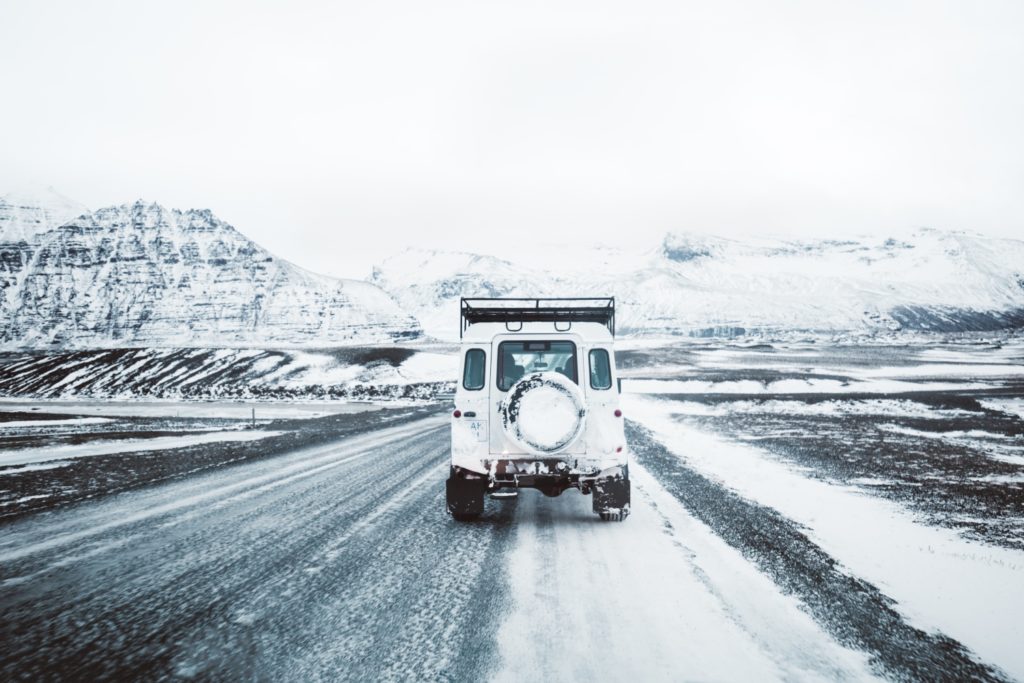
There are many ways to see the wonders of Iceland but if you want to get a rich experience of the island, hiring a car is the best way to do it. Driving opens up a world of opportunity, allowing for more flexibility and spontaneity. You can travel from hotel to hotel, get adventurous and explore the coastal areas or Golden Circle, or hit the Ring Road to take a trip around the whole island.
The main roads – particularly in urban areas and town centers – are typically cleared within a few hours following any storms. However, many of the more remote areas, including the Highlands, may be closed due to snow, ice, strong winds, or flooding, so it’s best to avoid these areas if you’re visiting in winter. This still leaves you with endless possibilities for a fabulous road trip, as Iceland has so many winter highlights to offer.
At Geysir, our team would be happy to sit down with you to discuss road trip itineraries and the best routes for driving around Iceland during the winter months.
Worried about driving in winter?
With Iceland being positioned so far north, the winters are usually extremely cold and dark. The winter season is the longest one, stretching from October through to March/April. This is the time when Iceland’s weather is at its most consistently extreme.
If you’re driving with us in winter, we would urge you to take extra care and to take into account that some of the more remote roads will be out of bounds. However, winter is still one of the purest and most beautiful times to see Iceland – it just requires more careful planning and common sense.
So, there’s really no need to worry! Just make sure you’re well prepared, pay attention to local guidelines, and keep this handy guide with you at all times.
Read more: The Best Time to Visit Iceland: Pros & Cons of Every Season (2023 edition)
1. Heed wind & weather warnings
Winter brings out the most extreme version of Icelandic weather. Our top tip is to stay across a reliable weather source, like the Icelandic Met Office and Safetravel Iceland. These two services will keep you updated with the latest weather warnings and road conditions. Be open to changing your itinerary if weather conditions dictate it, and never risk driving in dangerous conditions.
2. Never stop on the side or middle of the road for snaps
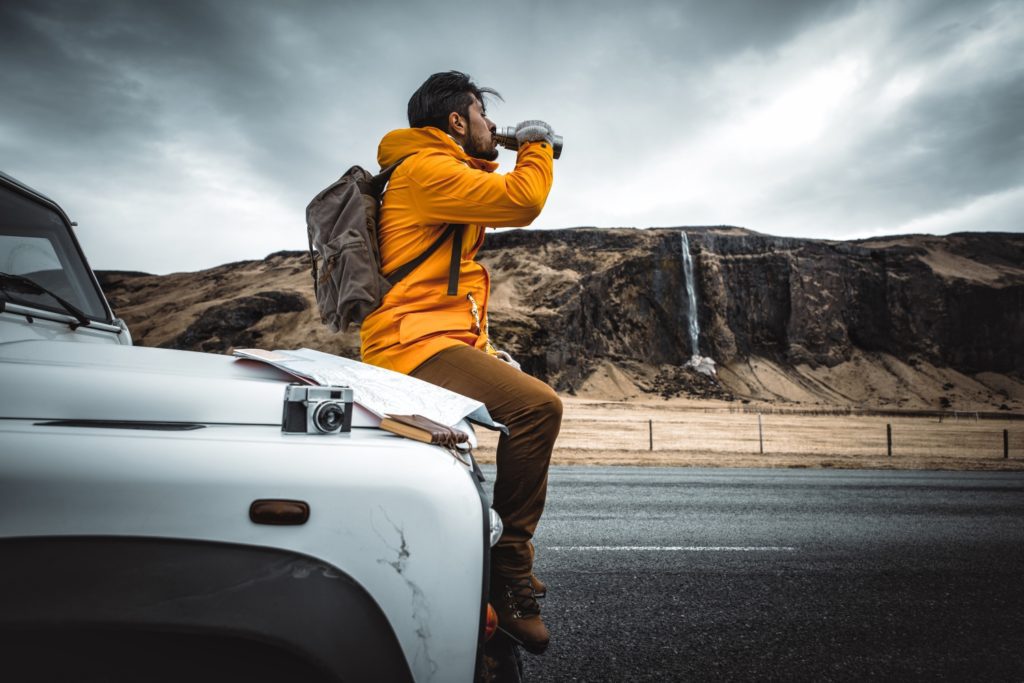
We know it’s tempting when you’re driving past a beautiful vista or waterfall to stop and take a photograph. Well, stopping on the side or the middle of any Icelandic road can be extremely dangerous, especially on Route 1. There are dedicated spots along Route 1 for visitors to pull over and take a refreshment or photography break. Elsewhere on the roads, there’s no hard shoulder, and while traffic isn’t always visible, there are still plenty of cars out on the roads during the winter months.
3. Don’t overstretch your itinerary
We see this all too often. Visitors get excited about their itinerary and cram in too much for the time they have available. This can cause a sense of anxiety and even lead to rushing or driving too quickly. In winter months, you always need to factor in buffer time in your journey and your overall itinerary. The weather could quite easily whip up into a snowstorm and force you to cancel plans for the day or, at least, have to wait a few hours for the roads to be cleared. We’d recommend accounting for at least an extra day in your plans.
4. ‘Lokað’ means closed
Memorize this word. It means closed. You’ll spot it occasionally around Iceland during the winter months, especially in the North. Many of the mountainous and remote roads may be closed due to the weather conditions. Venturing up these roads when you see a stop sign is against the law and can be extremely dangerous. Don’t risk it. These are strong words, but the winter weather in Iceland isn’t to be messed with!
5. Off-road driving is illegal
The last thing you want to do when travelling is to get in trouble with the lawmakers. Driving offroad might be tempting, but it’s actually illegal in Iceland. Only designated roads can be used to travel around Iceland. If you were to have an incident whilst driving off-road, your insurance policy wouldn’t cover it.
6. Beware of sheep, speed limits and gravel roads
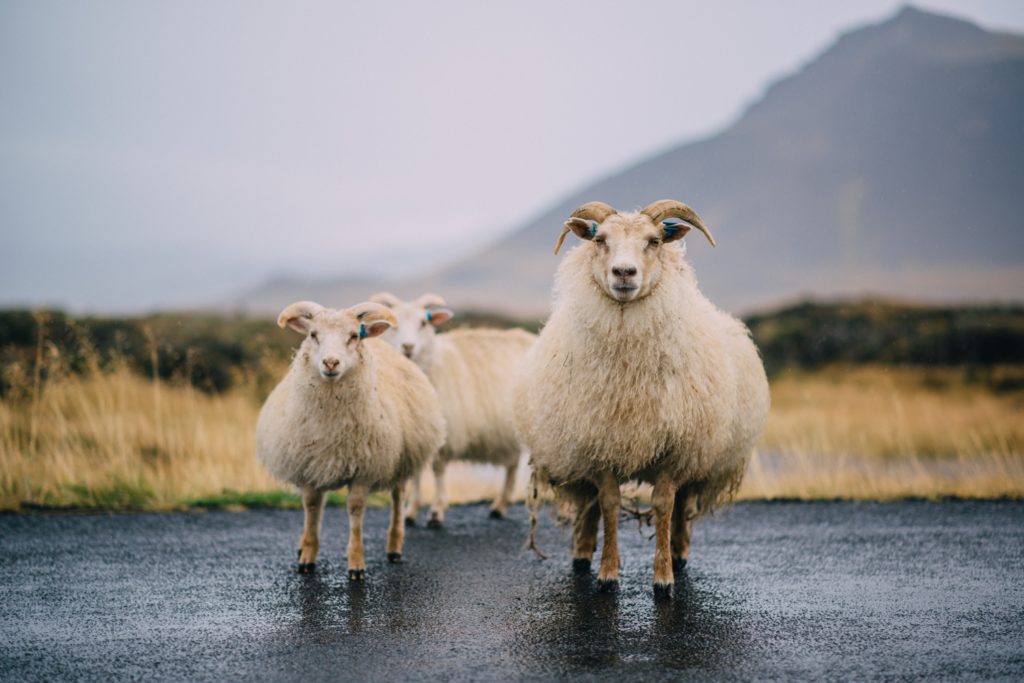
There are some things on Iceland’s roads you need to be constantly mindful of. Those are speed limits, sheep and gravel roads. We recommend avoiding gravel roads unless you have a suitable 4×4 when driving during the winter months. Sheep commonly drift onto the roads and require considered and careful driving to navigate. The speed limits are there for a reason, to protect you and other drivers.
They are:
- 90 km/h on sealed roads away from built-up areas
- 80 km/h on gravel or dirt roads
- 50 km/h in towns and cities.
7. Keep headlights on at all times
There is limited daylight throughout winter in Iceland, which means even during the day it can be totally dark. For this reason, headlights should be kept on all the time. At Geysir, we don’t stock any vehicles older than two years old, so you can drive in comfort knowing you have the latest in headlight brightness and technology.
8. Single-lane bridges require this approach
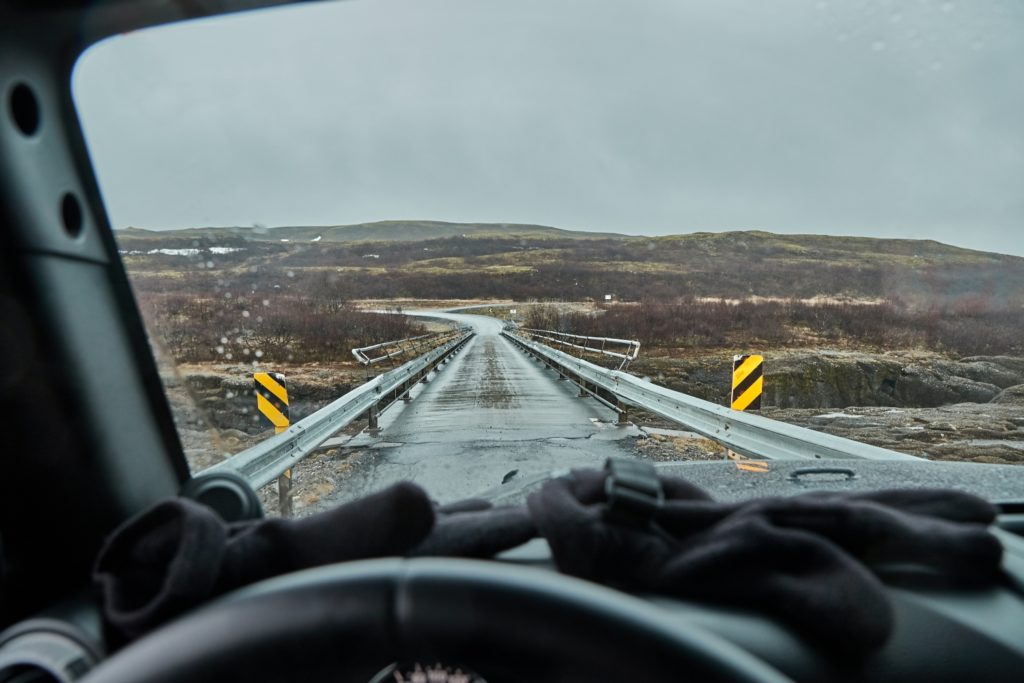
There are many single-lane bridges all over Iceland, including on the Route 1 Ring Road. These require additional driving care and caution. The rule for them is simple: whoever arrives at the bridge first gets the right of way. The other driver must wait patiently as they pass. A smile and thank you are also encouraged!
9. Avoid long drives at night
For those visiting Iceland for the first time or with limited experience of driving in winter weather conditions, you might be shocked by the sheer level of darkness when the sun goes down. There are no streetlights in the rural areas; it’s totally pitch black. In these conditions, you become fully reliant on your headlights. We recommend getting your bearings during daylight hours and avoiding long drives once the sun has set. It’s not worth the stress!
10. Vehicle & insurance type
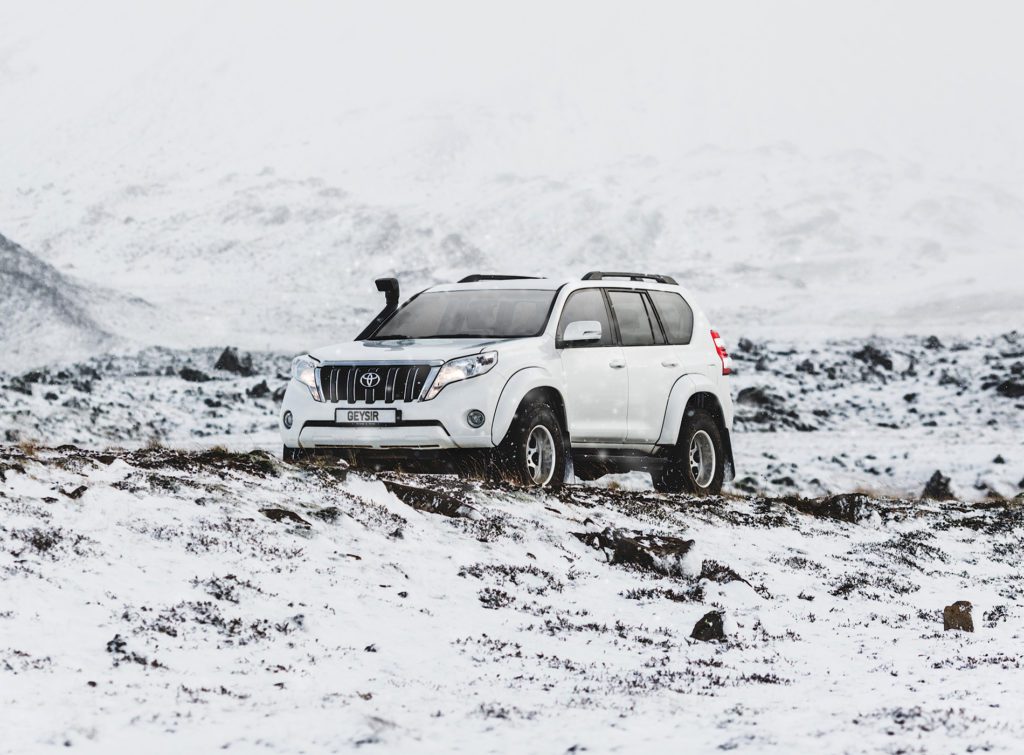
Geysir is leading the way by offering a wide range of vehicles to hire, including environmentally-friendly hybrid and electric car selections. The vehicle you need for winter driving really depends on your itinerary:
- City cars
- e.g. Hyundai Compact Class, Renault Megane Estate, Renault Megane, etc.
We recommend our selection of city cars for city drives and shorter trips on all paved roads with two or three passengers and little luggage.
- e.g. Hyundai Compact Class, Renault Megane Estate, Renault Megane, etc.
- 4×4 cars
- e.g. Suzuki Vitara 4×4, and Suzuki Jimny New Model 2019. We recommend our 4×4 range of vehicles for cross-country drives with the family. Our 4x4s vary in size, so depending on your family size and the amount of luggage, you’ll need to take a closer look at the full range.
- Luxury cars
- We recommend the luxury fleet for those who are spending extended time in their vehicles and are seeking that extra level of comfort and quality. Our 4×4 luxury range offers unbeatable comfort blended with excellent driving capability for a variety of road and journey types.
- Passenger vans
- We recommend our passenger vans for large groups taking long highway trips. The driver requires a specific driver’s license for passenger van driving.
- Motorhomes and campervans
- If you’re planning to camp in Iceland in the winter, you’ll want to stay warm, comfortable and safe in one of our motorhomes. Convenience and comfort on wheels make camping road trips in Iceland a dream. View our full range to find one suitable for you and your family.
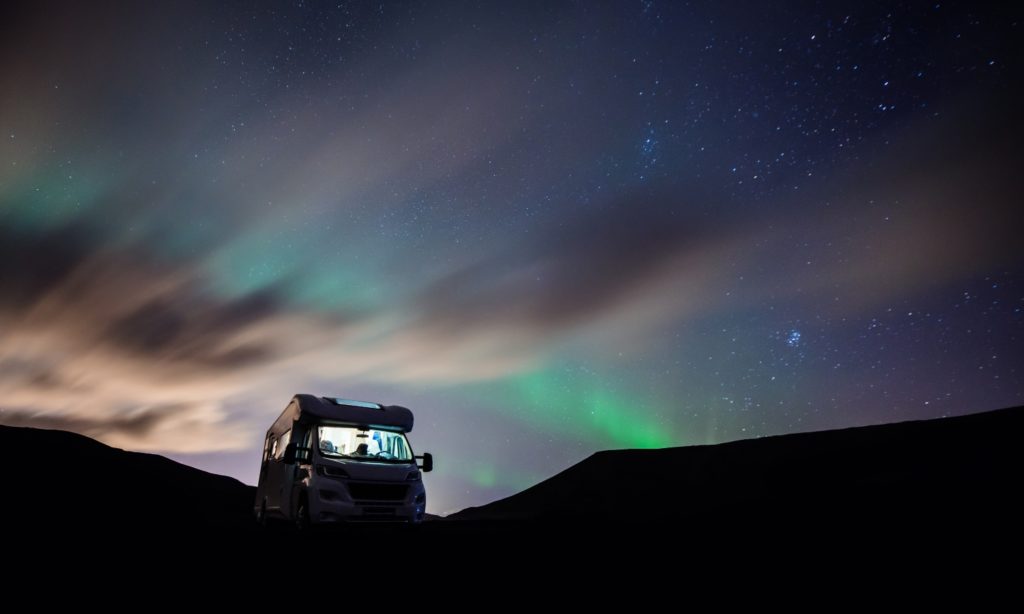
We also offer a range of insurance policies with our vehicles. The basic CDW Cover is included in all rentals. This insurance includes Theft Protection, third-party liability insurance, personal accident insurance and CDW insurance. The excess is ISK 500.000 on normal family cars and ISK 600.000 on 4×4 luxury cars and passenger vans.
Find out more about our full insurance packages and extras, or contact us at +354 455 0000 for a quote.
Preparation is the key to success
If you’ve set your sights on a self-drive trip in Iceland during the winter months, you won’t be disappointed – as long as you’re well-prepared in advance. Make sure you’re confident with driving in winter weather conditions, are prepared to keep your plans flexible, keep a close eye on the official weather website for up-to-date information on driving conditions, and rent the right type of vehicle for your journey.
All that’s left to do now is book your trip, rent a car and prepare for the adventure of a lifetime!
For more travel tips and inspiration for visiting Iceland, keep reading our blog…
Back